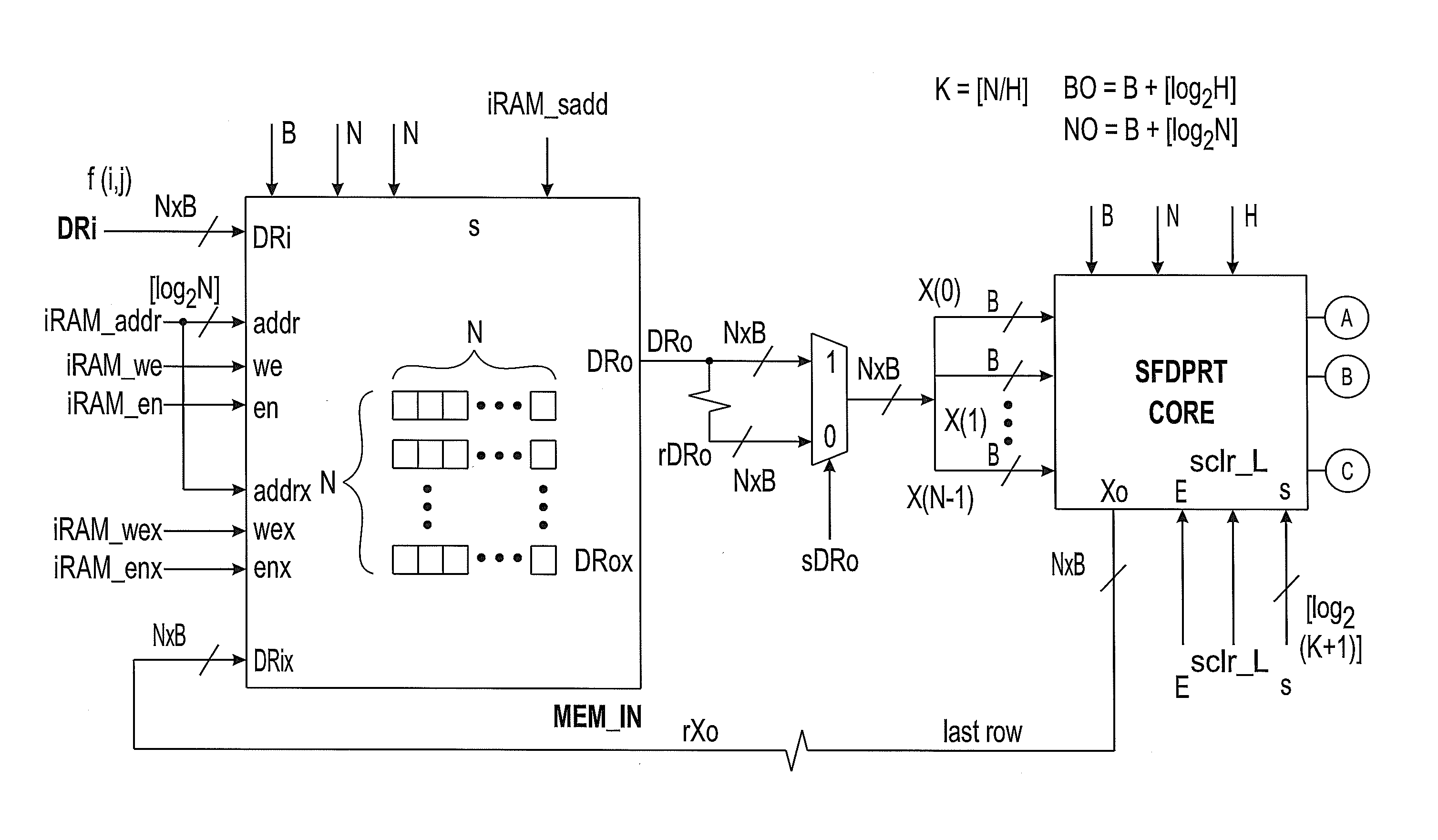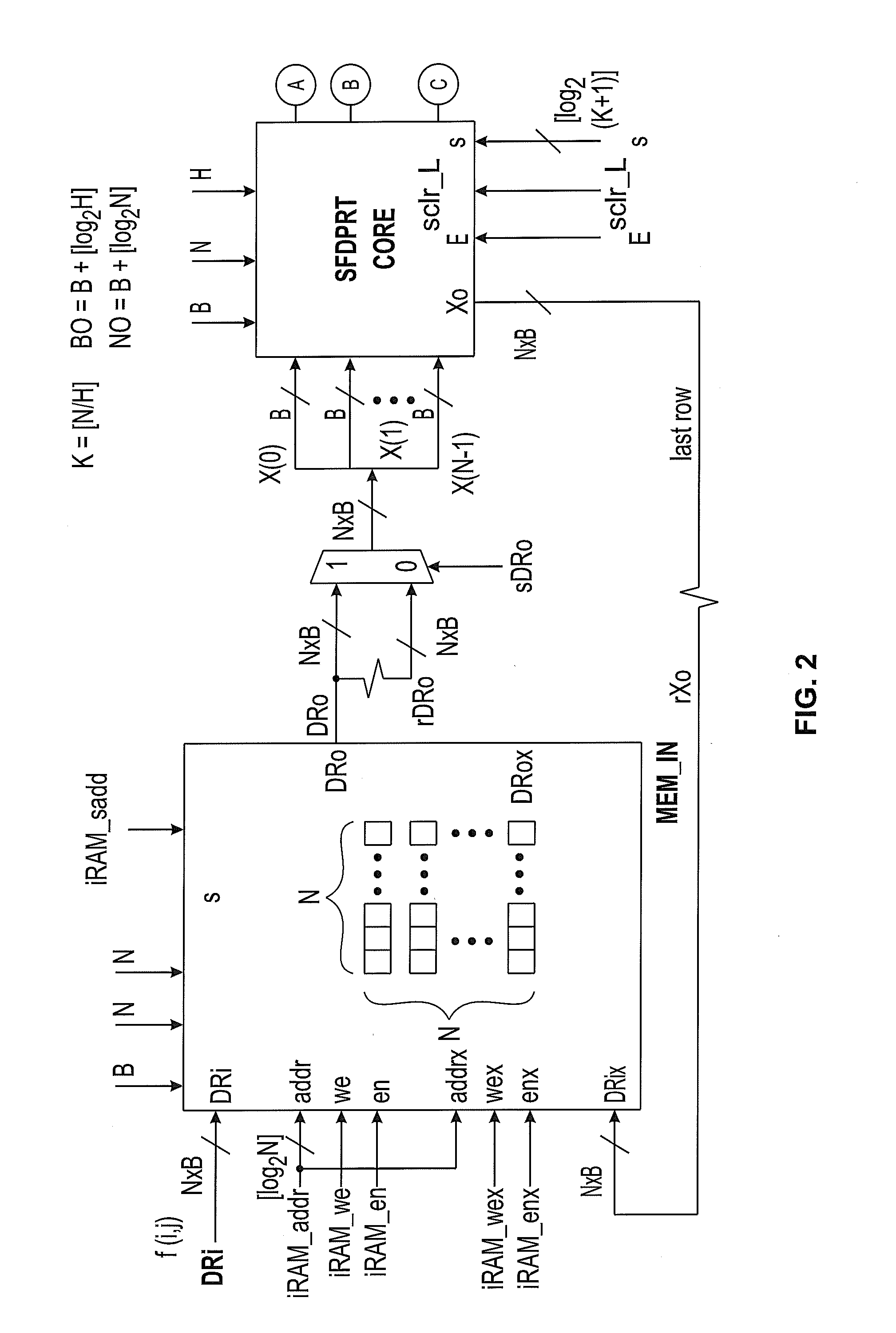System and methods for computing forward and inverse discrete periodic radon transform
- Summary
- Abstract
- Description
- Claims
- Application Information
AI Technical Summary
Benefits of technology
Problems solved by technology
Method used
Image
Examples
Embodiment Construction
[0043]The invention is directed to a scalable approach providing the fastest known implementations for different amounts of computational resources for computing the forward and inverse Discrete Periodic Radon Transform (DPRT). According to the invention, for a N×N image (N prime), the roposed approach can compute up to N2 additions per clock cycle. As an example, for a 251×251 image, for approximately 25% less resources, the fast and scalable DPRT (SFDPRT) is computed 39 times faster than the fastest known implementation. For the fastest case, the scalable architecture can be further reduced to obtain the FDPRT and iFDPRT in 2N+┌log2 N┐+1 and 2N+3 ┌log2N┐+B+2 cycles respectively (B is the number of bits used to represent each input pixel). Generic and parametrized architectures are developed in VHDL and validated using an FPGA implementation as described more fully below.
[0044]For purposes of this application, the following notation is introduced. N×N images are considered where N ...
PUM
 Login to View More
Login to View More Abstract
Description
Claims
Application Information
 Login to View More
Login to View More - R&D
- Intellectual Property
- Life Sciences
- Materials
- Tech Scout
- Unparalleled Data Quality
- Higher Quality Content
- 60% Fewer Hallucinations
Browse by: Latest US Patents, China's latest patents, Technical Efficacy Thesaurus, Application Domain, Technology Topic, Popular Technical Reports.
© 2025 PatSnap. All rights reserved.Legal|Privacy policy|Modern Slavery Act Transparency Statement|Sitemap|About US| Contact US: help@patsnap.com



